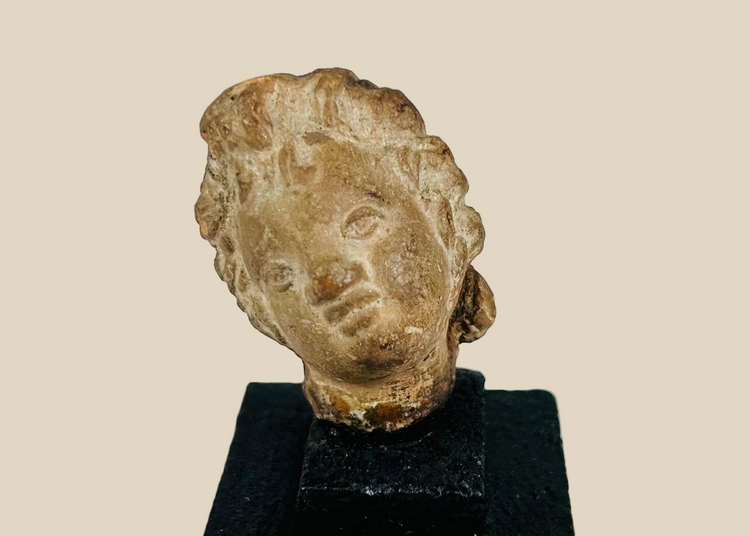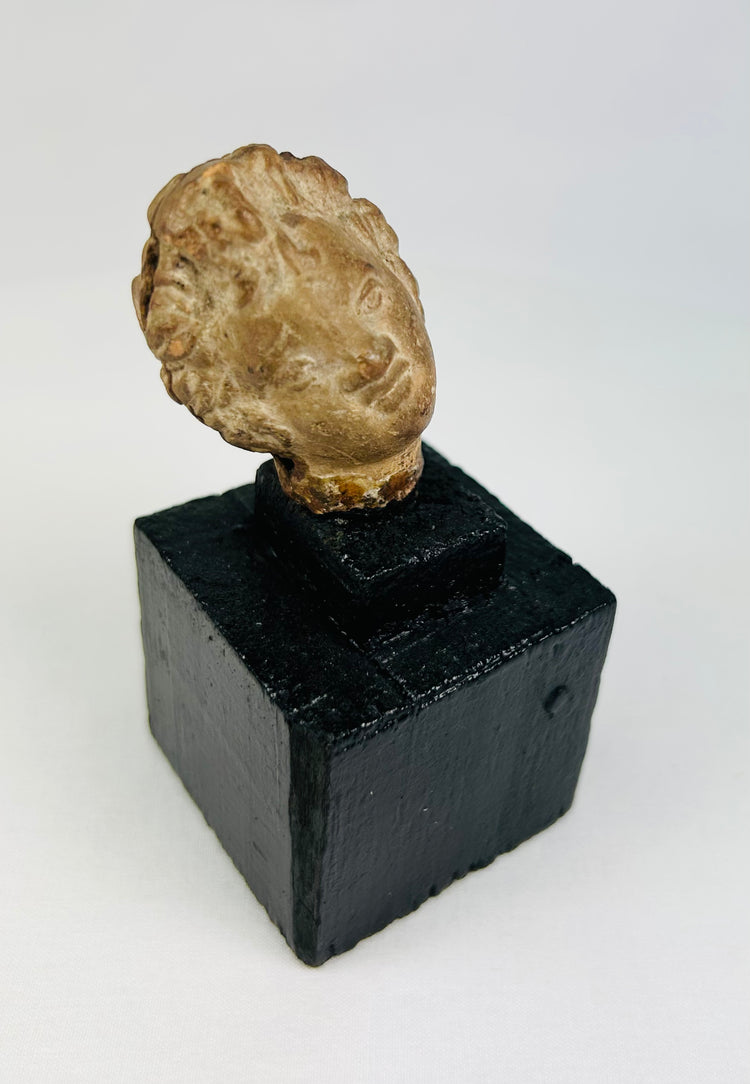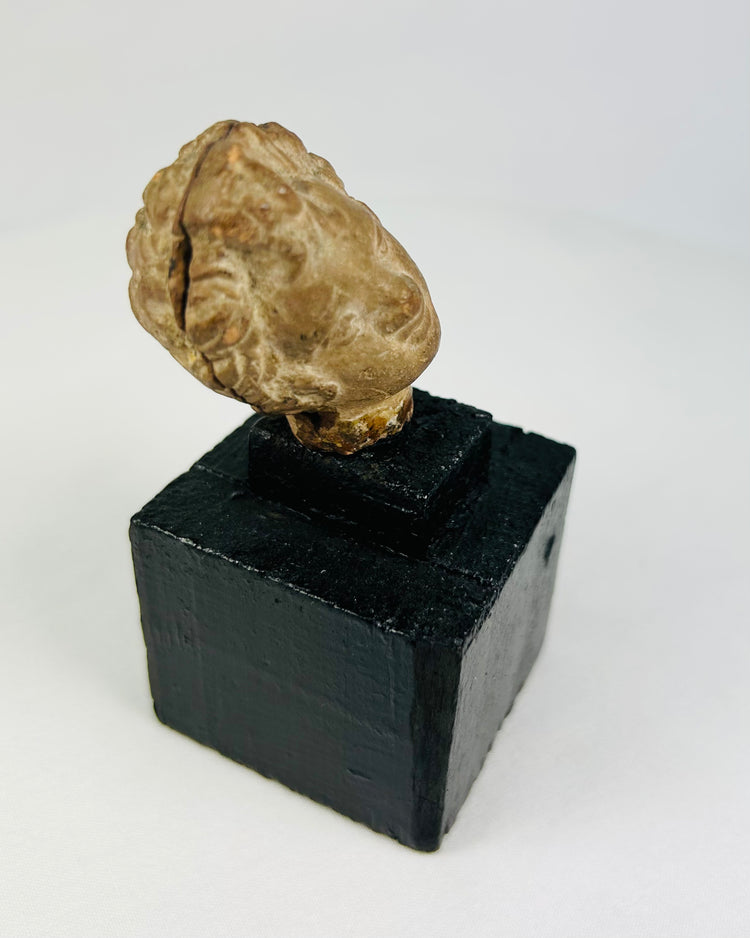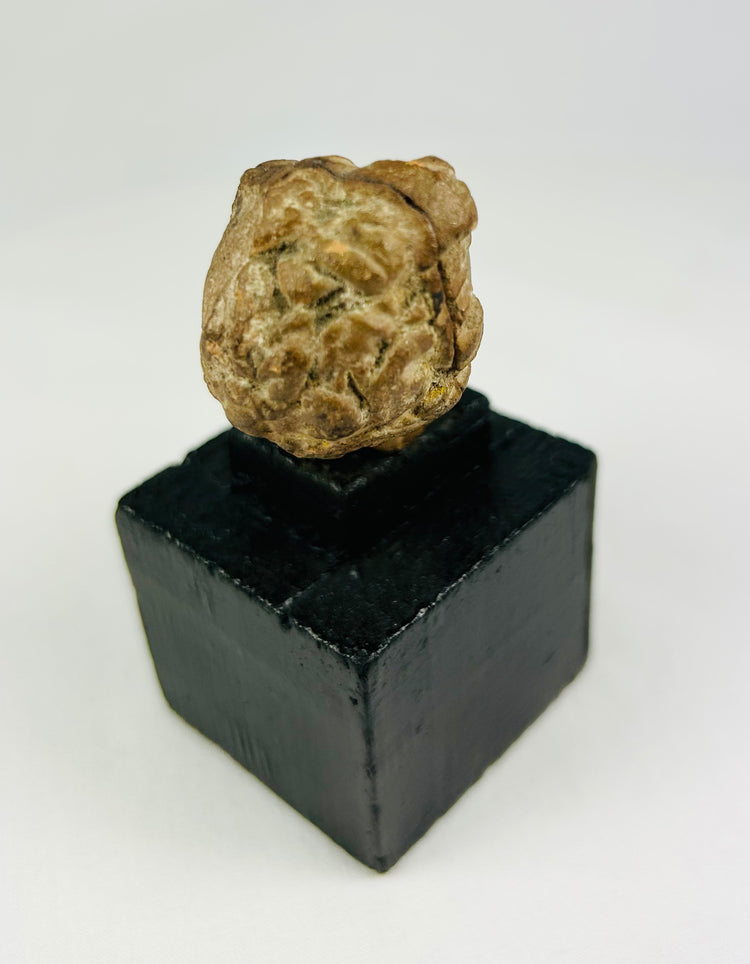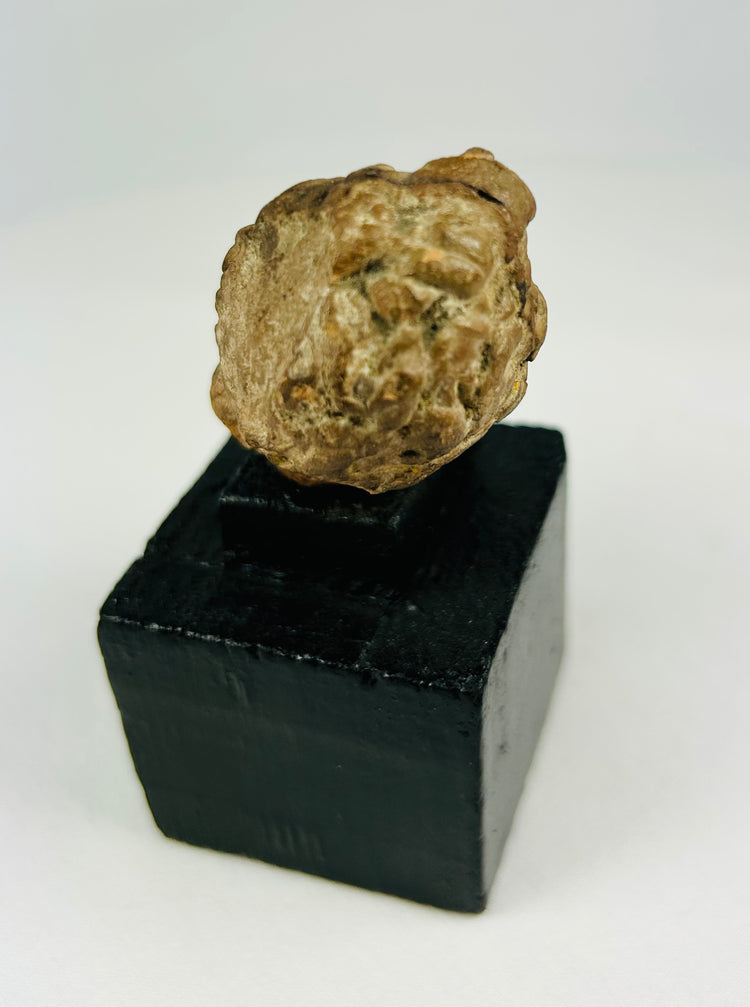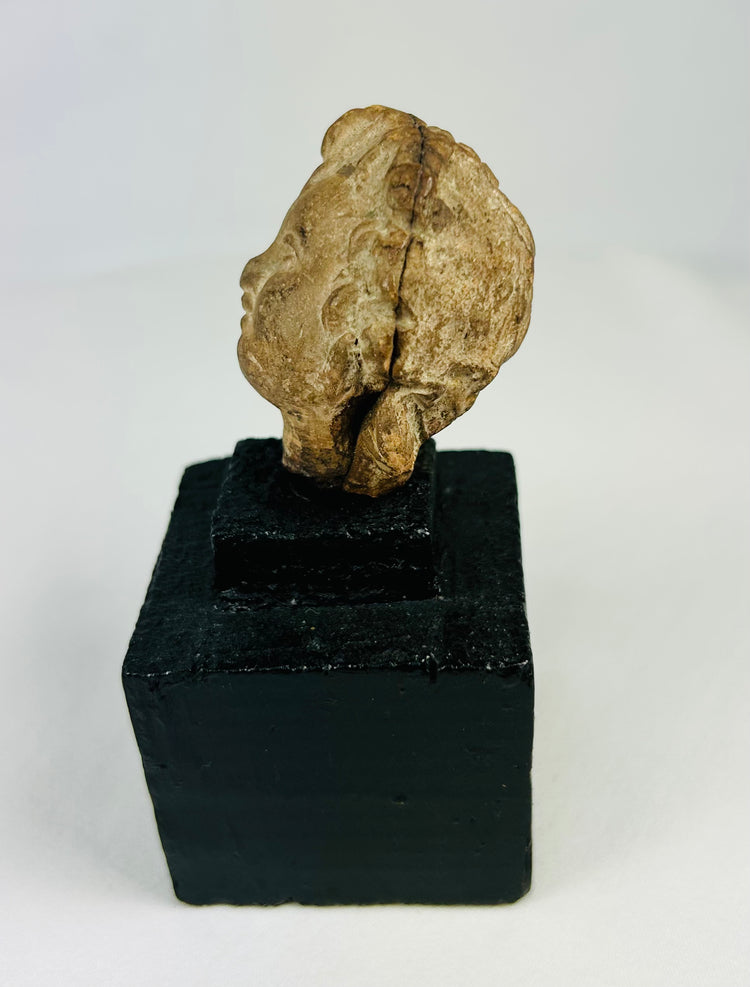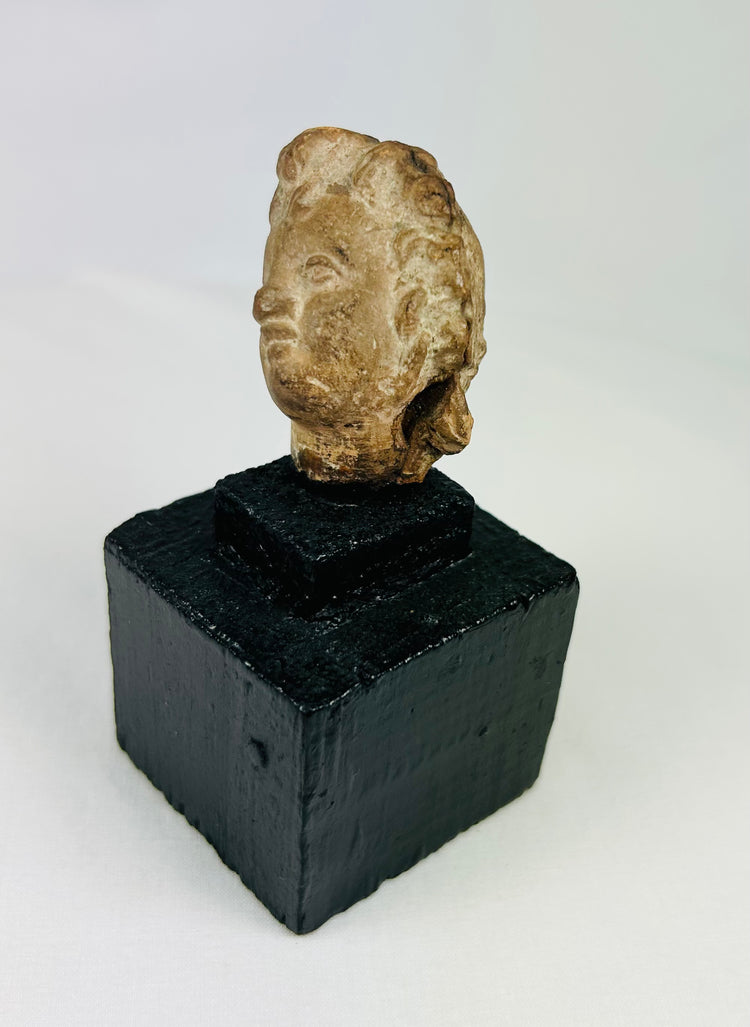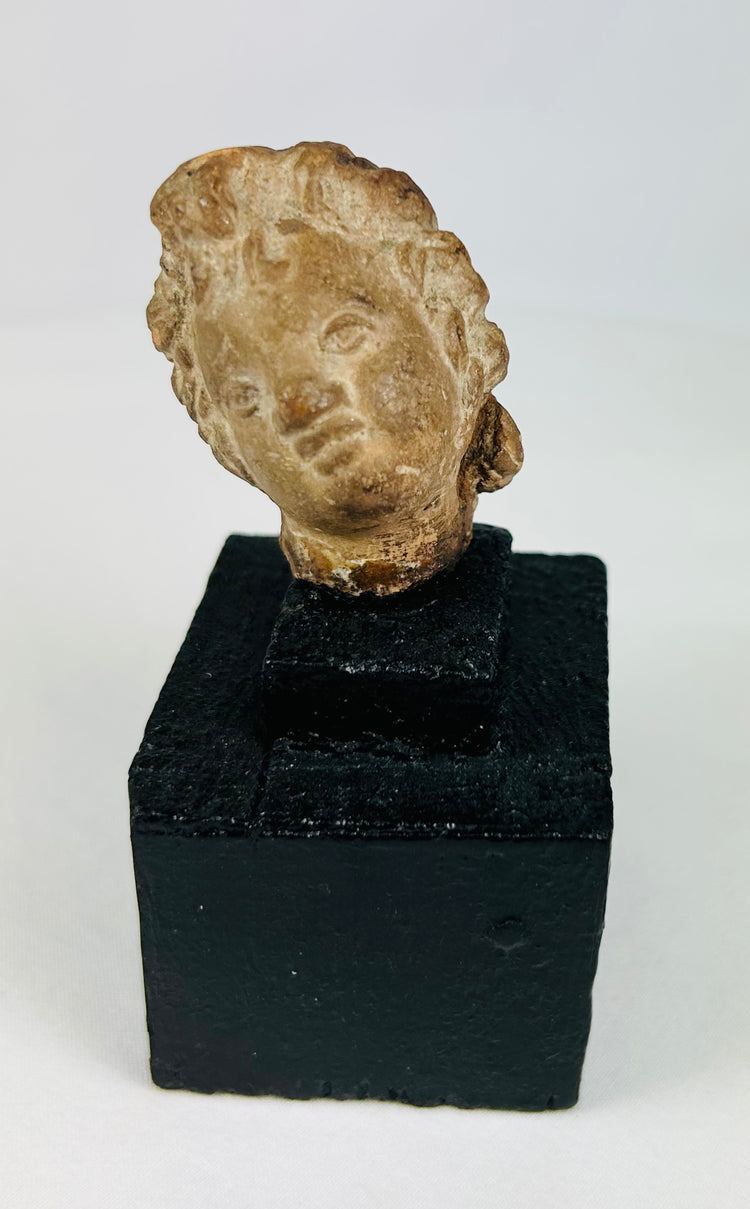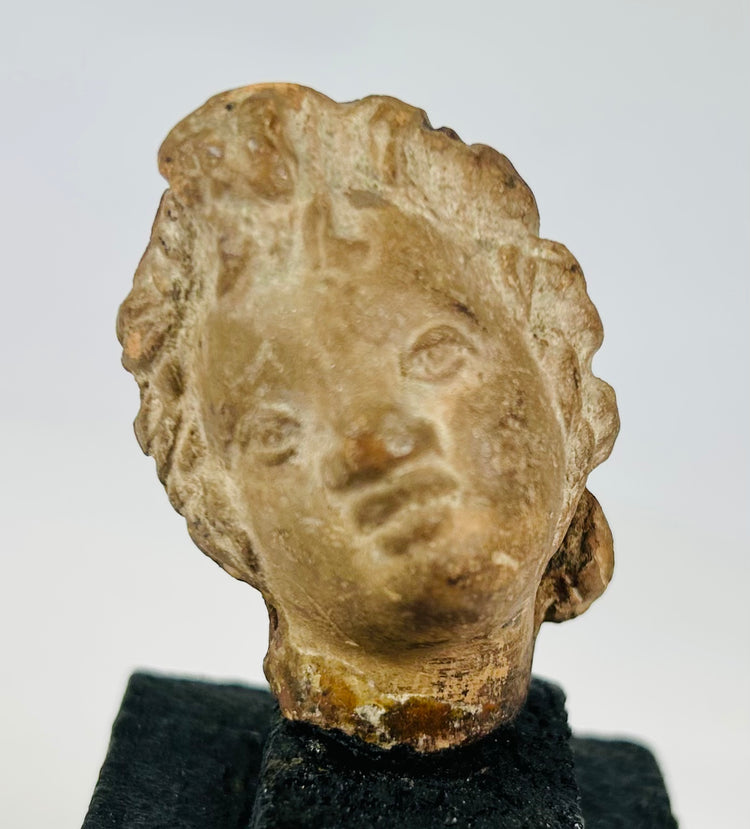Classical Antiquity Head Fragment | Expressive Facial Detail | Circa 1st Millennium BCE–CE
Description
More
Less
Historical Context & Origin
Region: Likely Mediterranean (Greece or Rome) or Near Eastern
Material: Carved terracotta or stone, mounted on modern base
Period: Antiquity, circa 1st millennium BCE – 1st millennium CE
Description
This finely carved head fragment, once part of a larger figurine or votive statue, reflects the artistry and devotional practices of the ancient world. Despite its fragmentary state, the facial contours remain expressive, with delicately modeled features and traces of stylized hair still visible. The warm, earthen patina testifies to centuries of burial and natural aging, enhancing its authenticity and historical resonance. Now mounted on a custom black base, the piece is stabilized for both study and display, offering a tangible link to ancient Mediterranean or Near Eastern culture.
Features
- Ancient carved head fragment from a larger figurine or votive piece
- Stylized facial details and traces of hair still visible
- Warm surface patina consistent with great age and burial
- Mounted on a custom display base for preservation and presentation
- Compact and evocative artifact suitable for collection or exhibition
Cultural Significance
Fragments such as this were commonly part of devotional or domestic sculptures in antiquity, created to honor deities, ancestors, or household spirits. They embody both the spiritual and artistic traditions of early civilizations, where even modest terracotta or stone figures carried deep symbolic meaning. Today, such artifacts are prized for their ability to preserve a direct sense of humanity and belief from cultures long past.
Condition
Fragmentary but stable condition with weathering, surface wear, and small losses consistent with antiquity. Patina and mineral accretions enhance authenticity. Securely mounted for display.
Dimensions (approximate)
Height: 3.5 in
Width: 1.75 in
Depth: 1.75 in
Age
Circa 1st millennium BCE – 1st millennium CE
Description
Historical Context & Origin
Region: Likely Mediterranean (Greece or Rome) or Near Eastern
Material: Carved terracotta or stone, mounted on modern base
Period: Antiquity, circa 1st millennium BCE – 1st millennium CE
Description
This finely carved head fragment, once part of a larger figurine or votive statue, reflects the artistry and devotional practices of the ancient world. Despite its fragmentary state, the facial contours remain expressive, with delicately modeled features and traces of stylized hair still visible. The warm, earthen patina testifies to centuries of burial and natural aging, enhancing its authenticity and historical resonance. Now mounted on a custom black base, the piece is stabilized for both study and display, offering a tangible link to ancient Mediterranean or Near Eastern culture.
Features
- Ancient carved head fragment from a larger figurine or votive piece
- Stylized facial details and traces of hair still visible
- Warm surface patina consistent with great age and burial
- Mounted on a custom display base for preservation and presentation
- Compact and evocative artifact suitable for collection or exhibition
Cultural Significance
Fragments such as this were commonly part of devotional or domestic sculptures in antiquity, created to honor deities, ancestors, or household spirits. They embody both the spiritual and artistic traditions of early civilizations, where even modest terracotta or stone figures carried deep symbolic meaning. Today, such artifacts are prized for their ability to preserve a direct sense of humanity and belief from cultures long past.
Condition
Fragmentary but stable condition with weathering, surface wear, and small losses consistent with antiquity. Patina and mineral accretions enhance authenticity. Securely mounted for display.
Dimensions (approximate)
Height: 3.5 in
Width: 1.75 in
Depth: 1.75 in
Age
Circa 1st millennium BCE – 1st millennium CE
You May Also Like
























